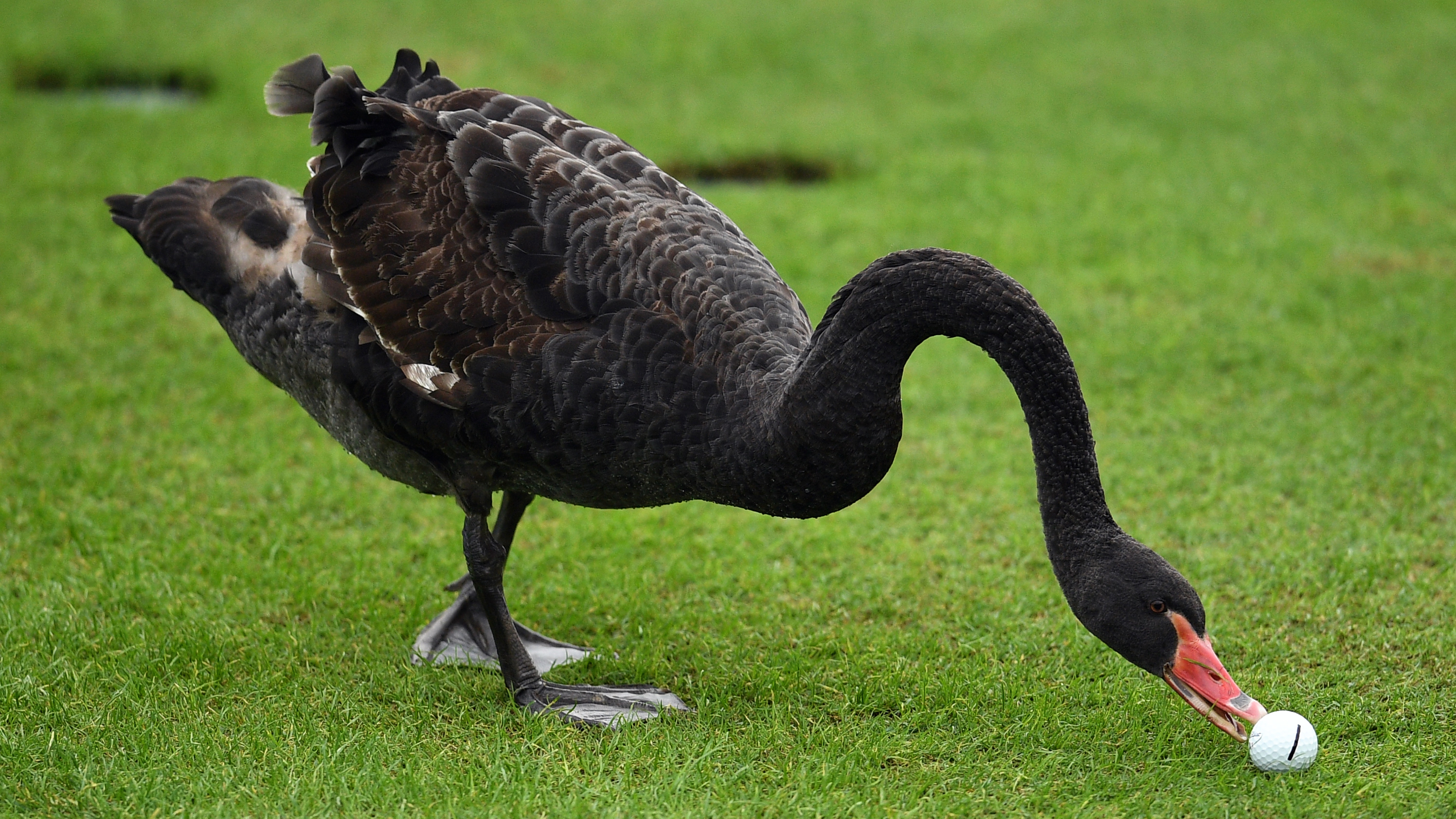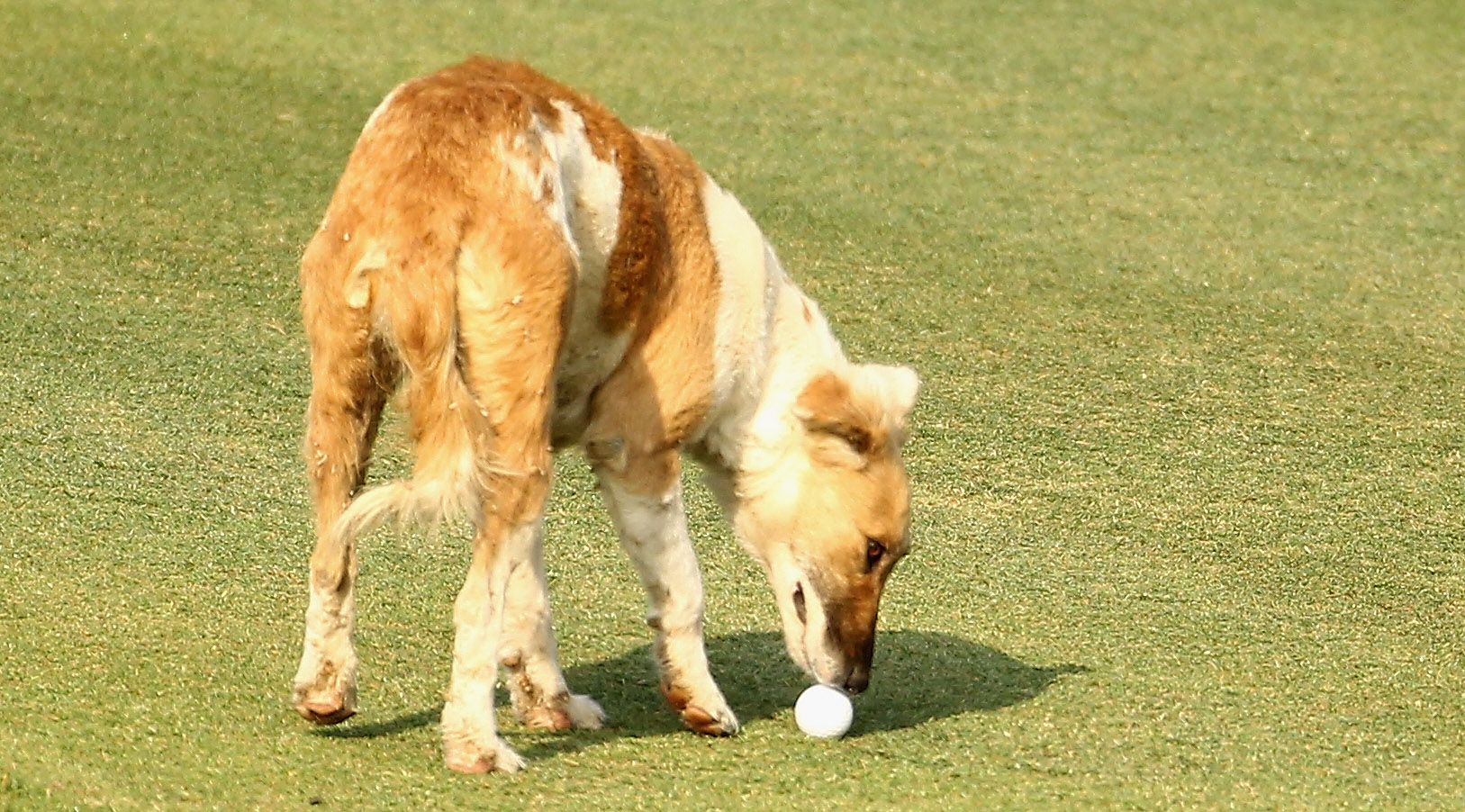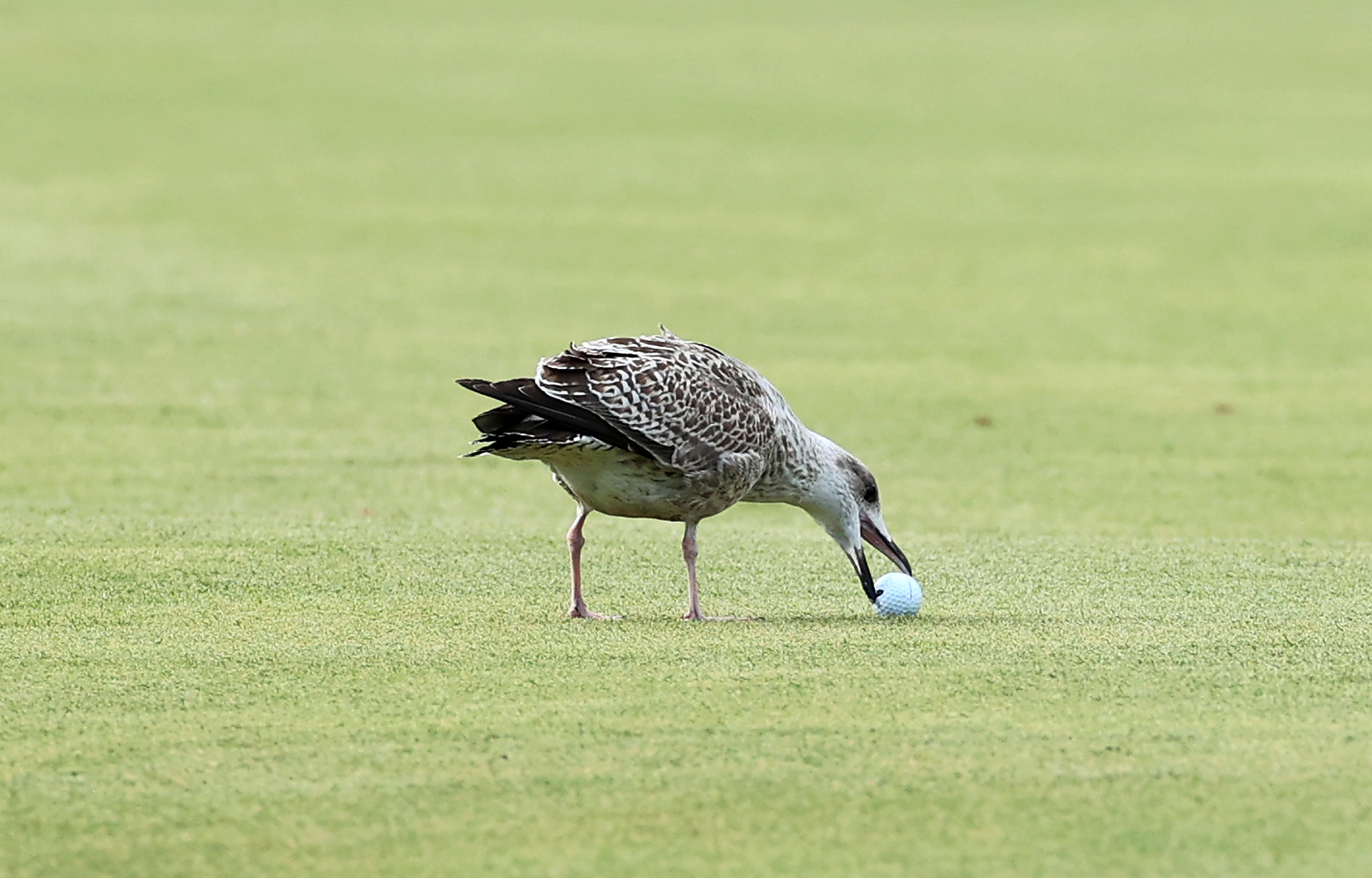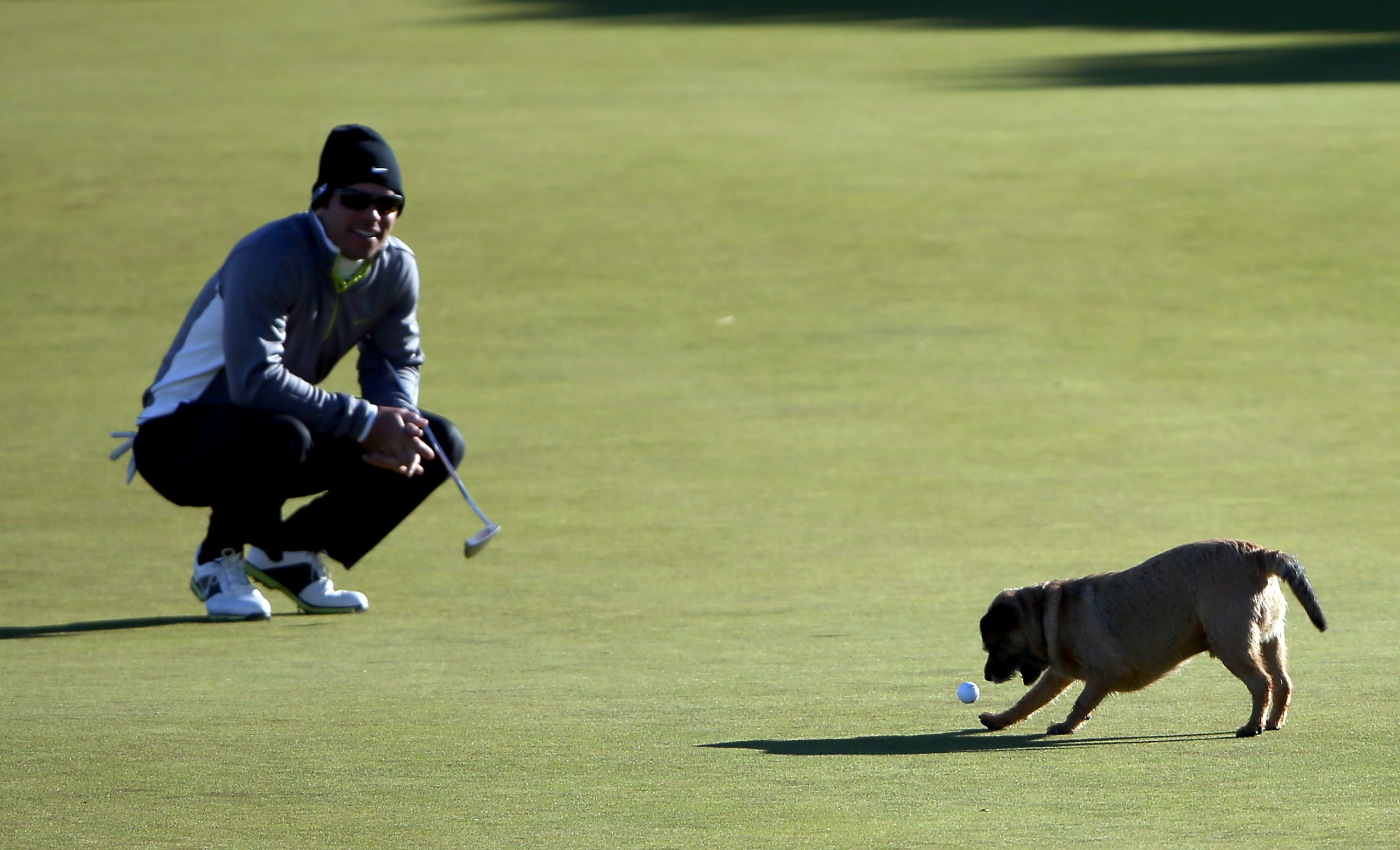
You may have never had this happen to you - or at least never seen it happen - but it can and does occur on golf courses around the world where the fairways are shared with local wildlife and other animals that occasionally take more than a passing interest in golf balls.

Thankfully, this is actually quite a straightforward Rules scenario. Animals or birds are considered outside influences when it comes to the Rules of Golf, with the definitions section describing an ‘outside influence’ as:
Any of these people or things that can affect what happens to a player’s ball or equipment or to the course:
• Any person (including another player), except the player or their caddie or the player’s partner or opponent or any of their caddies,
• Any animal,
• Any natural or artificial object or anything else (including another ball in motion),
except for natural forces, and
• Artificially propelled air and water, such as from a fan or irrigation system.
Our focus here is animals, whether it’s a seagull picking up a ball and making off with it, as happened to Phil Mickelson in the 2019 US Open, or a playful dog deciding it's the perfect time for a game of fetch, as happened to Paul Casey in the 2012 Alfred Dunhill Links Championship at Kingsbarns.

When a ball is moved by an outside influence, Rule 9.6 covers what to do next. First, it needs to be known or virtually certain that an outside influence has moved the ball and that was definitely the case for both Mickelson and Casey.
Known or virtually certain means more than just probable or possible; it means that either there is conclusive evidence that it happened, or, from all reasonable available information, it is at least 95 per cent likely that the event in question happened.
If this is the case, there is no penalty to the player and the ball must be replaced. If the exact spot isn’t known, it must be estimated (Rule 14.2). The player can also clean the ball before replacing it. Mickelson didn’t know the exact spot, but with help from a spectator and official he was able to determine the original location and replace the ball.

But what happens if the ball can’t be easily retrieved – perhaps a seagull has dropped it in the sea or a pond or a dog has disappeared with the ball in its mouth. Rule 14.2a has the answer here, for, while the original ball must be used when replacing a ball, there is an Exception that allows another ball to be used when the original ball cannot be recovered with reasonable effort and in a few seconds, so long as the player did not deliberately cause the ball to become unrecoverable.
Another Exception under Rule 14.2a would also allow the original ball to be substituted if it had become cut or cracked as a result of the unwanted animal interference (Rule 4.2c), but not if it had merely become scratched or scraped or its paint were only damaged or discoloured.
So, if you see an animal move your golf ball or make off with it, don’t panic – just remember it’s an outside influence and follow the procedures outlined in Rules 9.6 and 14.2 and you’ll soon be on your way again penalty-free even if you might be a Titleist Pro V1 down.







